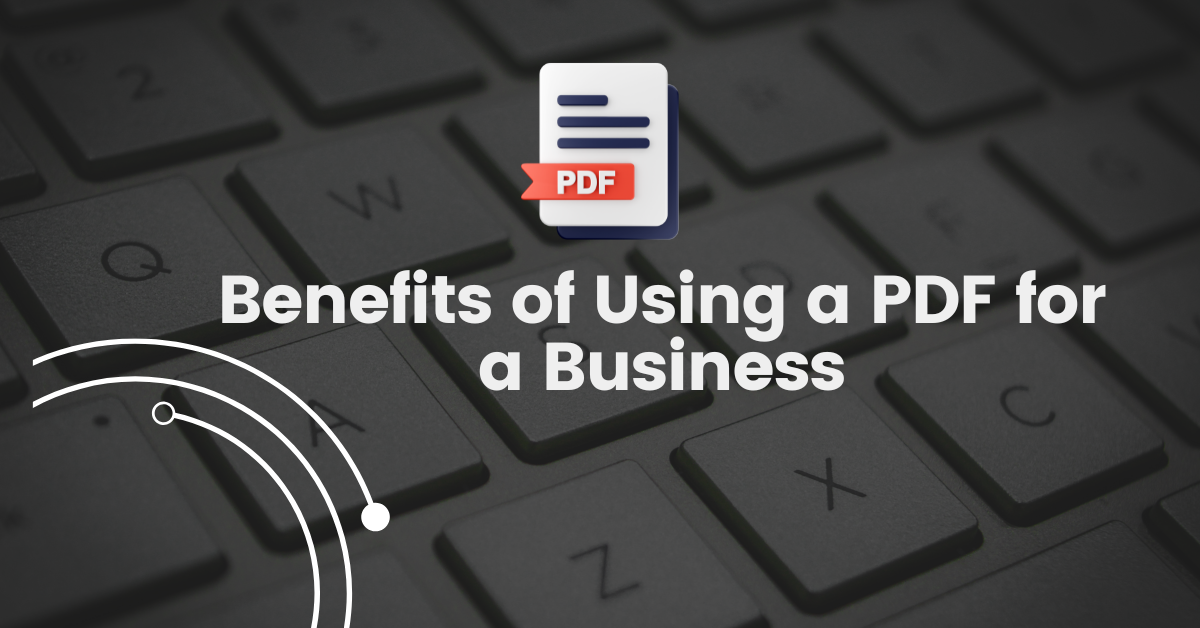Managing documents efficiently can make or break a business in today’s digital age. PDFs stand out among the various formats available for their versatility and reliability. But what exactly makes PDFs a go-to choice for businesses? From maintaining document integrity to ensuring compatibility across different devices, the advantages of using PDFs are numerous and impactful. Let’s dive into why adopting PDFs can be a game-changer for your business operations.
What is a PDF?
A PDF, or Portable Document Format, is a file type created by Adobe Systems in the early 1990s. Its main strength lies in its consistent presentation of documents across various platforms and devices. PDFs can include text, images, hyperlinks, and even interactive elements like forms and buttons.
Unlike other file formats, PDFs preserve the original layout and formatting, ensuring the document looks the same no matter where it’s viewed. This makes PDFs ideal for sharing official documents, contracts, brochures, and any content where maintaining the exact appearance is crucial.
9 Benefits of Using a PDF for a Business
Using PDFs can streamline many aspects of business operations. From enhancing document security to improving accessibility, PDFs offer a range of benefits that can boost efficiency and professionalism. Here are 9 key advantages of incorporating PDFs into your business practices:
1. Universal Compatibility
PDFs can be opened on any device or operating system without altering the format. This ensures that your documents are accessible to anyone, regardless of their software or hardware.
2. Preserved Formatting
Unlike other file types that might change appearance across different platforms, PDFs maintain their original layout and design. This is crucial for documents where visual integrity is important, such as contracts or marketing materials.
3. Enhanced Security
PDFs offer robust security features, including password protection and encryption. This ensures that sensitive information remains confidential and is only accessible to authorized individuals.
4. Reduced File Size
PDFs can compress high-quality content into smaller file sizes, making it easier to share and store documents without sacrificing quality. This is especially beneficial for businesses that handle large volumes of data.
5. Interactive Features
PDFs can include interactive elements like hyperlinks, buttons, and fillable forms. This makes them versatile for various business needs, from creating interactive presentations to collecting customer information through forms.
6. Easy Integration
PDFs integrate seamlessly with various business software, including document management systems and email clients. This simplifies workflow and document management processes.
7. Archival Stability
PDFs are ideal for archiving documents due to their stability and long-term readability. They are less likely to become obsolete compared to other file formats, ensuring that your records remain accessible over time.
8. Professional Appearance
PDFs provide a polished and professional look, enhancing your business’s image. This is particularly important for external communications, such as proposals and reports.
9. Searchable Content
Many PDFs support text search functionality, making it easy to locate specific information within a document. This can save time and increase productivity, especially when dealing with lengthy documents.
Why Are PDFs So Important?
PDFs are important due to their universal compatibility across devices and operating systems, preserving document formatting meticulously. They offer robust security features, compact file sizes, and multifunctionality, accommodating various needs from simple text documents to complex presentations.
PDFs ensure accessibility for individuals with disabilities, convey professionalism in official documents, and facilitate efficient searching and indexing.
Conclusion
Leveraging PDFs offers numerous advantages for businesses in today’s digital landscape. From ensuring universal compatibility and preserving document integrity to providing robust security features and enhancing accessibility, PDFs streamline document management processes.
Their versatility, professionalism, and efficiency make them indispensable tools for businesses seeking to optimize their workflows and communicate effectively with clients, partners, and stakeholders.
Embracing PDFs empowers businesses to navigate the complexities of modern information exchange with ease, ultimately driving productivity and success in a competitive market environment.
Also visit :
What is the difference between a PDF and a Word document
Guide to Popular PDF Magazine Download Sites
how to fill out a pdf form
how to add signature to pdf

Niketa Mulay, a seasoned content writer and editor, has over a decade of experience. With a Master’s in Journalism, she honed her skills at The Times of India and now freelances across various industries. Passionate about reading, writing, and scuba diving, she shares expert PDF guides and tips at PDFdrivehub.com.




